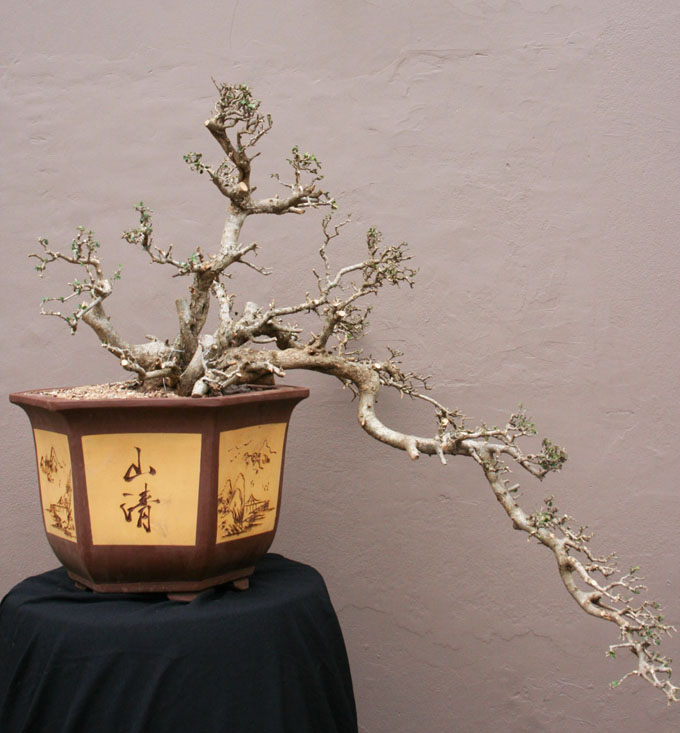 Robert Steven’s simulation of an Olive that was submitted by Gary Howes (it’s Gary’s second time, here’s the first).
Robert Steven’s simulation of an Olive that was submitted by Gary Howes (it’s Gary’s second time, here’s the first).
Ramification. In the almost two and one half years since we ran our first critique by Robert Steven, he has repeatedly emphasized the importance of developing branching (ramification), particularly fine branching (secondary, tertiary and so forth). Especially if you want to create the feel of maturity on a young tree (or any tree for that matter). And though you can’t grow new branches overnight, it doesn’t take that long to get a good start. How long depends on a number of factors, but a lot can be accomplished in just two or three years if you know what you are doing
Sources. Many of our back issues of Bonsai Today have excellent articles on ramification, and there are also a host of previous posts on Bonsai Bark might be helpful – here’s one that has some good information and several useful links, here’s another and another. For more you might try searching ramification or pinching.
 Here’s the photo that Gary submitted.
Here’s the photo that Gary submitted.
ROBERT’S CRITIQUE
Any material can be turned into nice bonsai, and not necessarily just old dramatic material. Even simple material can have potential as long as we know how to explore its character, how to set the scene to create the feeling we are looking for, and how to use proper aesthetic support, such as the choice of a container and other things that can enhance the overall effect.
Old massive material can turn into macho and powerful designs, but simple material can turn into sweet and charming bonsai as well.
This bonsai is made of simple material, but despite its young character, it has nice lines with good movement and interesting multiple trunks. But it is not designed in the best possible composition and not planted in a proper container. Consequently, the design is not too appealing.
The focal point is biased by the over-sized pot and the visual flow is driven up to the apex instead of along the downward flowing line, which is where it should be. Last but not least, because the ramification (branching) is not well developed, the tree looks immature. A bonsai may be young, but should look like a mature tree.
Here is my solution. The top should be shortened to reduce its domination and left trunk should be cut off to eliminate its distracting flow in the wrong direction. The lower line should be bent to create better flow, then the ramification needs to be improved.
Lastly, a light colored, slim, tapered cascade pot will improve the overall visual balance. The final design is now more interesting with a cheerful and charming feminine look.
Although it’s now without leaves, it looks like a mature tree because of the finely developed ramification (branching).
ROBERT’S GENERAL COMMENTS
There is more than one way to design any bonsai and my critiques and recommended solutions might not always fit your taste and personal preferences, but I always try to give my opinion based on artistic and horticultural principles.
To understand my concepts better, please read my books Vision of My Soul and Mission of Transformation which are available at Stone Lantern.
My new bonsai blog and my facebook pages.
Selamat Siang, dng hormat srt krendahan hati sy berharap dan memhon sran,msukan, srt gmbaran kedepan trhadap bhn bonsai sy yg tlah trkirim. Trima kasih bpk Robert
Pk Wihanata,
Foto anda sudah saya terima, tetapi pengambilan foto tsb kurang jelas, kabur, sudut pandang yg salah, tdk lengkap dgn pot sehingga sulit utk saya komentari.
Salam !